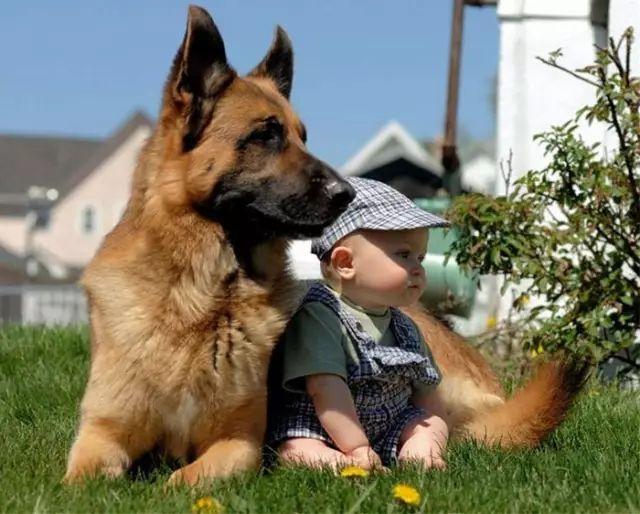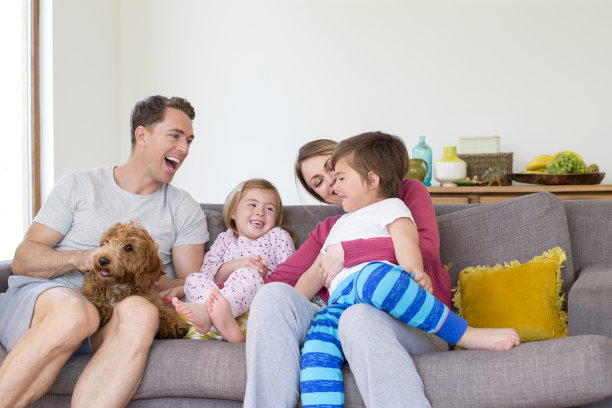
Teenager Life: Living in The Fast Lane
To consider what having a dog means to a teenager, we have to try to identify with where the teenager is at in this normally complex time of development. In 2019, The New York Times interviewed 17 year old, Sadie Radinsky about what it was like to have a family dog to relate too. She mostly listed ways she cared for and connected with her current dog, but when asked what benefit she gets from having a dog, Sadie mentioned having a dog helps her stop – and live for the present. Not something many teenagers are conscious of, in their opinions.
Adolescents: Finding and Proving Their Identity
A study by R. Purewall, R. Christely, K. Kordas, C. Joinson, K. Meints, N. Gee, C. Westgrath. (2017) identified building positive relationships as crucial during adolescent development. Many studies focused only on human to human social development. Purewall et al (2017), explored that ” Childhood and adolescence are crucial life phases in their contribution to the quality of health, emotional well-being, learning and behavior across the life span”
The Value of The Family Dog in Your Teenager’s Life

Studies on adolescent research indicate that for teenagers, “growing up” can be a very stressful time. Adolescence is the next phase of rapid development after toddlerhood. Adolescent development attempts to establish peer to peer relationships, expand interpersonal and intrapersonal skills as well as complete coping skills development for success in adulthood. Teenagers are very emotional, and learning how to cope with their feelings is increasingly important to help provide resources and outlets for them to debrief at the end of their long day.
There is a Difference Between “Pet Ownership” And “Pet Attachment” For Adolescent Development
Purwall et al. (2017) defined in their research that “pet ownership” and “pet attachment” are two different meanings. They were able to show that pet ownership and pet attachment lead to different behaviors by the adolescents and different psychosocial benefits. The adolescent can self-identify as being a “pet owner”, but may not have true “pet attachment”. While it is also possible for an adolescent to self identify as being “attached” the their pet without seeing themselves as the pet’s owner.
Adolescents that self-identified as the pet’s owner and had an attachment to the dog, generally got more psycho-social benefits. Psycho-social benefits included ability to manage more responsibility, and be more self-accountable and have higher self-esteem overall compared to same age peers without a pet at home. The more the teenager felt responsible to the animal, the more they participated in the care, the more involved with the pet they were overall. The relationship also had a correlated impact in how much they would confide in the pet, and how much that debriefing helped relieve the teenagers stress and anxiety experiences.
This is not to undervalue teenagers who saw themselves as pet owners but not “attached” to the animals. These teenagers still felt a responsibility to provide the basic care, without being overly involved. Basic chores revolved around feeding and walking, but may not have been consistent. These teens were also able to demonstrate limit setting, directly or indirectly. Although, less attached to the family dog, they still were responsible to the dog to a certain extent. They also were less likely to confide in the family dog and therefore had less of an emotional attachment to the family dog. Perhaps preferring the company of humans more than animals.
There is a Difference Between “Pet Ownership” And “Pet Attachment” For Adolescent Development

Purwall et al. (2017) defined in their research that “pet ownership” and “pet attachment” are two different meanings. They were able to show that pet ownership and pet attachment lead to different behaviors by the adolescents and different psychosocial benefits. The adolescent can self-identify as being a “pet owner”, but may not have true “pet attachment”. While it is also possible for an adolescent to self identify as being “attached” the their pet without seeing themselves as the pet’s owner.
Adolescents that self-identified as the pet’s owner and had an attachment to the dog, generally got more psycho-social benefits. Psycho-social benefits included ability to manage more responsibility, and be more self-accountable and have higher self-esteem overall compared to same age peers without a pet at home. The more the teenager felt responsible to the animal, the more they participated in the care, the more involved with the pet they were overall. The relationship also had a correlated impact in how much they would confide in the pet, and how much that debriefing helped relieve the teenagers stress and anxiety experiences.
This is not to undervalue teenagers who saw themselves as pet owners but not “attached” to the animals. These teenagers still felt a responsibility to provide the basic care, without being overly involved. Basic chores revolved around feeding and walking, but may not have been consistent. These teens were also able to demonstrate limit setting, directly or indirectly. Although, less attached to the family dog, they still were responsible to the dog to a certain extent. They also were less likely to confide in the family dog and therefore had less of an emotional attachment to the family dog. Perhaps preferring the company of humans more than animals.
How Adolescents Benefit From Having a Dog
Adolescents that had a dog, regardless of identifying as pet owner or having an attachment to the pet did experience benefits over adolescents that did not have a pet prior to adulthood.
The benefits adolescents with family dogs experienced were vast psycho-social and physical outcomes. Let’s start exploring the emotional benefits:
Anxiety – Dogs can relieve social anxiety and separation anxiety in adolescents. Having a family dog can increase adolescents social networks and ease communication with peers.
Depression – No direct correlation could be concluded between family dogs and decreased levels of depression in adolescents. Findings where thought to be more correlated to the other psychological benefits of having a dog such as increased self-esteem, decreased sense of loneliness and decreased sense of self-isolation.
Self-esteem/self-concept – Adolescents that had a dogs scored higher for self-esteem and self-concept than adolescents without pets. Purewall et al. (2017) found, ” other studies also indicate that pet ownership alone is sufficient to have a positive effect on self-esteem or self-concept, independent of pet attachment.” Having a family dog had profound, positive psychological effects on adolescents confidence. These psychological benefits also help build resilience in adolescence, a life long coping skill that is essential for success in adulthood.
Behavioral Outcome – Adolescents with dogs who identified as “pet owners”, were more likely to gain autonomy and self-reliance. They also were able to appreciate their parents in other roles then their parental role. Expanding their understanding of life and preparing them for the complexities of adulthood.
Cognitive and Educational Benefits

Cognitive Development – Pet ownership and pet attachment and parental guidance in pet care were found to have benefits for teenagers social cognitive development. Social cognitive development included skills such as, problem solving abilities, perceptive taking, self-reliance and independent decision making. Teenagers with a dog at home showed strong self-reliance skills and independent decision making skills over same-aged peers with no pets at home. (Purewall, 2017).
Although, researchers want more information from future studies. They question if the supportive family dynamics surrounding owning a dog were the positive impact on the adolescents self-reliant ability and independent decision making skills. Skills that were socially reproduced because they were well roll-modeled in the family already.
Or did caring for the dog actually cause self-reliance and independent decision making skills to be stronger in adolescents? Since adolescents caring for pets would have needed to advocate for the family dog at one time or another, gaining advanced skills for transition to adulthood.
Educational Benefits – Having a companion animal has been shown to motivate students academic achievement and learning development in multiple studies. Often, dogs and adolescents engage in reciprocal play which is both verbal and physical, creating a unique bond between teenager and animal that is unique. This simplistic-appearing interaction is a catalyst for success with complex developmental attainment for teenagers during their transition into adulthood.
Dogs indirectly promotes educational benefits by maximizing adolescents cognitive executive functioning and emotional stability. Having a family dog also has shown to provide students with a better understanding of biology both in humans and animals. As they have grown up with a family dog they often have a better understanding of the factual anatomy. They have learned about their own anatomy and that of an animal through direct experience, although at the time, learning was not necessarily intentional.
Further research is needed to determine if family dogs actually correlate directly with higher academic achievement, or if having a dog helps strengthen some areas of emotional intelligence without elevating academic achievement over same-aged peers without family dogs. Generally adolescents are more open to learning about topics they have a general interest in and having a family dogs provides multiple benefits for academic and experiential achievement for all teenagers.
Adolescents Gain Social Benefits With a Family Dog
Social Benefits – Adolescents growing up with a dog were also found to have increased social competency than same-aged peers without a family dog. Having a family dog increased the teens social networks, gave them discussion topics, a way they could be similar or different than peers. Either way, having a family dog increased peer social interaction among teenagers who had a family dog at home, over peers who did not have a family dog. Teenagers who had family dogs also spend more time out in the community because of walking the dog, or being out with the dog, than teenagers who did not have a family dog at home.
Adolescents: Coming Into Their Own
Adolescent development is complex and fascinating. Although often a stressful time for parents, the outcome is a well-balanced, well socialized adult. An adult who is self-reliant and is resilient against the world with minimal need for parental assistance, and an openness to human partnership. To help us explore adolescent behavior, I found this great video on what is actually happening during this phase. There are changes you can see, like puberty, mood swings, stress and some defiance for rules. There are also many neurological and hormonal changes you can not see.
The dog provides a constant source of support during this confusing, stressful and exciting time for the adolescent. A companion that is always there, even if the adolescent feels their parents or their friends are not. The family dog is non-judgmental and vulnerable enough to require care from your teenager which provides a positive feedback relationship. Your teenager is sensitive to emotions of others and adolescence is a great time to praise your teens ability to show caring sensitivity.
Conclusion: Teenagers Are Specializing Their Minds For Life, Growing Up With Dogs Provide Social, Emotional and Psychological Benefits
In this article we discussed the many ways teenagers benefit from growing up with a family dog. There are so many benefits for teenagers to have a dog – emotionally, cognitively, behaviorally, educationally and socially. This is a highly-paced phase of transformation in your teenagers life. Hard on you too, as you watch them grow and form meaningful relationships outside the home. They become less of the child they were, and more of the adult they are becoming. Their skills and assets are becoming more defined more specialized. They are further developing their passions and choosing a career path. A dog gives them comfort and support and reassurance, and invaluable skills to build resilience for a lifetime.


